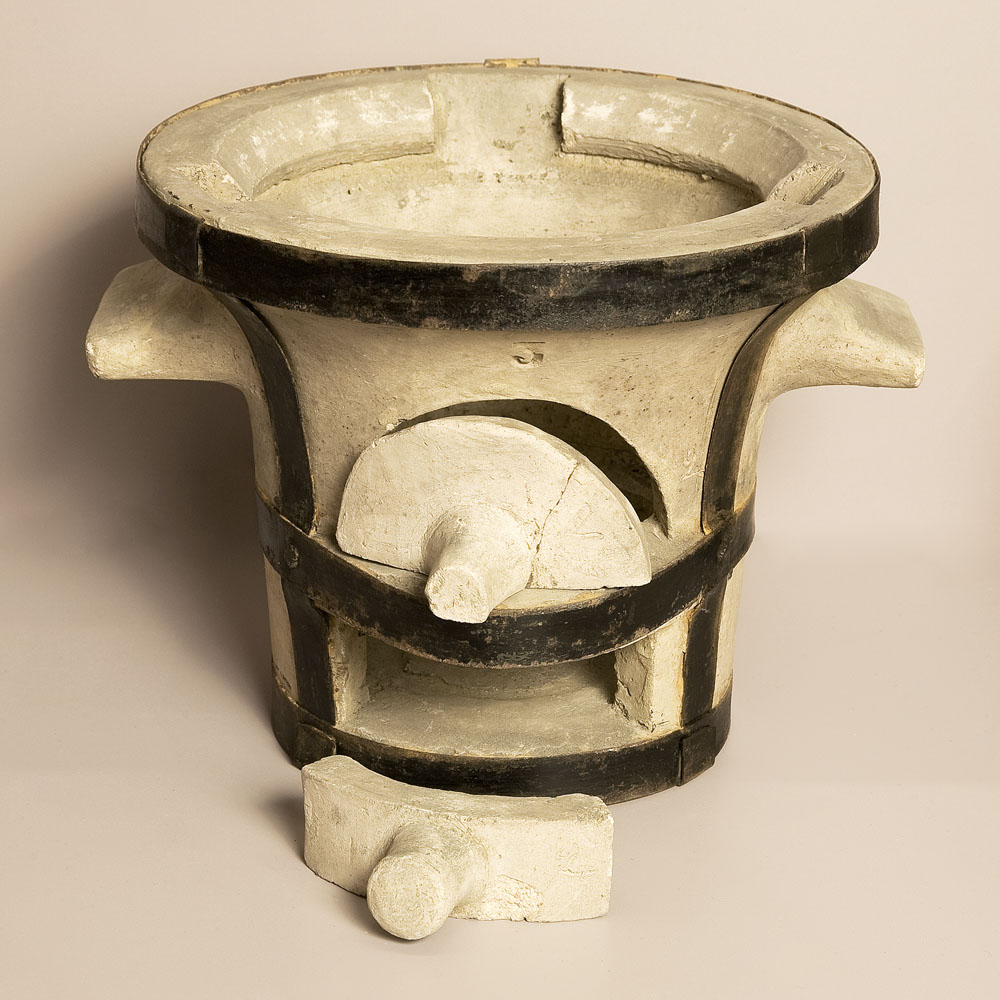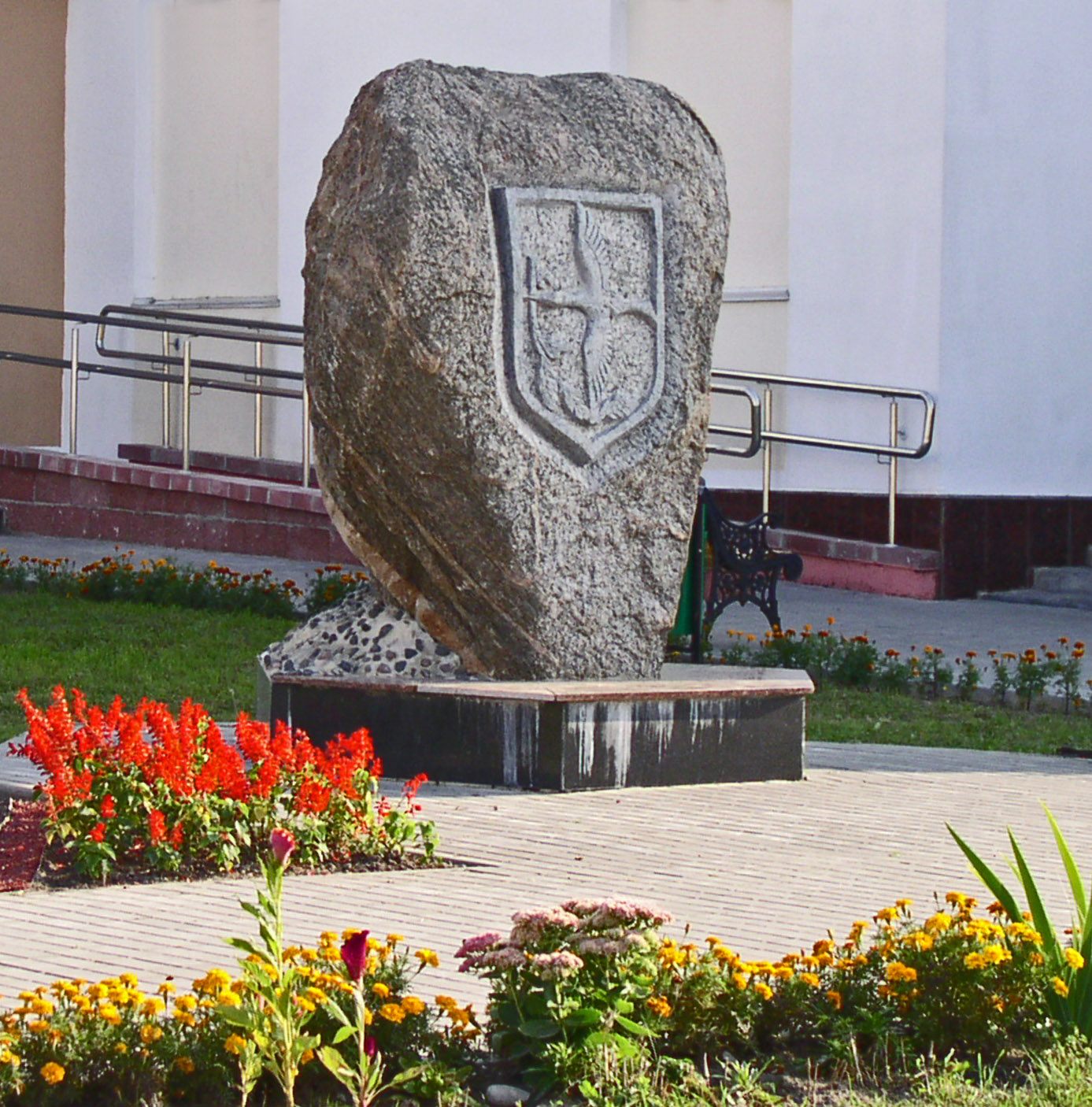|
Skopin
Skopin (russian: Скопин) is a town in Ryazan Oblast, Russia, located on the Vyorda River ( Oka's basin) southwest of Ryazan. Population: History Skopin is considered to be one of the oldest towns in Ryazan Oblast. A settlement named Likharevskoye Gorodishche near present-day Skopin was founded some time in the 12th century. It was fortified with moats and ramparts for protection against the Cuman people. In 1663 (or 1597, according to another accountDavies has Skopin as part of the Abatis Line, which would put it before 1600 (Brian L. Davies. ''Warfare State and Society of the Black Sea Steppe'', 2007, p. 45)), the Tsar built a wooden fortress on the spot of today's Skopin, which would become a part of the defense system on the southeast of the Grand Duchy of Moscow. It had been called Skopinskaya sloboda since the late 17th century. In 1778, the town was renamed Skopin. In the 18th century, the town lost its military significance. In the second half of the 19th c ... [...More Info...] [...Related Items...] OR: [Wikipedia] [Google] [Baidu] |
Skopinsky District
Skopinsky District (russian: Скопи́нский райо́н) is an administrativeLaw #128-ZS and municipalLaw #76-OZ district (raion), one of the twenty-five in Ryazan Oblast, Russia. It is located in the southwest of the oblast. The area of the district is . Its administrative center is the town of Skopin (which is not administratively a part of the district). Population: 27,080 ( 2010 Census); Administrative and municipal status Within the framework of administrative divisions, Skopinsky District is one of the twenty-five in the oblast. The town of Skopin serves as its administrative center An administrative center is a seat of regional administration or local government, or a county town, or the place where the central administration of a commune A commune is an alternative term for an intentional community. Commune or comună or ..., despite being incorporated separately as a town of oblast significance—an administrative unit with the status equal to that of the d ... [...More Info...] [...Related Items...] OR: [Wikipedia] [Google] [Baidu] |
Viktor Mokhov
Viktor Vasilyevich Mokhov (russian: Ви́ктор Васи́льевич Мо́хов; born 22 June 1950 in Skopin, Ryazan Oblast) is a Russian criminal who in 2000 kidnapped two girls, then 14 and 17 years old, kept them in a basement and raped them for almost four years. Biography Mokhov lived in the Russian city of Skopin about 90 km from Ryazan. He was employed as a metalworker at the Skopin automobile assembly plant. He is described as having been a good worker, always ready to help. His foreman often held him up as an exemplary worker. Towards the end of the 1970s he was married, but divorced after only three months. At the time of the kidnapping he was living with his mother, and had no children. At his house Mokhov built a garage with a bunker. The sitryazan.rudescribes the structure thus: The entrance to the bunker was carefully hidden from curious snoopers - it couldn't be accessed through the garage door; you had to go around to the side and using a screwdriver ... [...More Info...] [...Related Items...] OR: [Wikipedia] [Google] [Baidu] |
Sergey Biryuzov
Sergey Semyonovich Biryuzov (; 21 August 1904 – 19 October 1964) was a Marshal of the Soviet Union and Chief of the General Staff. Early life and prewar service Biryuzov was born in Skopin, in the Ryazan Governorate of the Russian Empire, in a working-class family of Russian ethnicity. He joined the Red Army in September 1922, studying at the 48th Rostov Infantry and Machine Gun and the 10th Vladikavkaz Courses in the North Caucasus Military District before transferring to the VTsIK Combined Military School in Moscow in October 1923. After graduating from the latter, Biryuzov returned to the North Caucasus Military District in September 1926 to command a platoon of the 65th Rifle Regiment of the 22nd Rifle Division. In the same year he became a member of the Communist Party of the Soviet Union. From December 1929 he served as commander of an airfield company of the 36th Aircraft Fleet in the district. After completing studies at the Military Faculty of the Moscow Zootechnic ... [...More Info...] [...Related Items...] OR: [Wikipedia] [Google] [Baidu] |
Alexander Afinogenov
Alexander Nikolayevich Afinogenov (russian: Алекса́ндр Никола́евич Афиноге́нов) (, Skopin – 29 October 1941, Moscow) was a Russian and Soviet playwright. Biography Alexander was born in the town of Skopin, in Ryazan Oblast. He joined the CPSU in 1922. He obtained a degree in journalism in 1924, the year that he published his first play. In the 1920s he was a member and later director of the Proletkult's theatre. He turned away from the Proletkult in the late 1920s, and became in the early 1930s the chief drama theoretician of the Russian Association of Proletarian Writers. He wrote 26 plays, but he is best known for ''Fear'' (1931) and ''Mashenka'' (1941). His work was attacked in 1936 and he was expelled from the CPSU in 1937, but he was never purged, and was rehabilitated in 1938. He continued writing until his death in a German air raid in 1941. He was married with American ballerina Jenny Marling (Schwartz). Her first husband was John Bovingdo ... [...More Info...] [...Related Items...] OR: [Wikipedia] [Google] [Baidu] |
Administrative Divisions Of Ryazan Oblast
*Cities and towns under the oblast's jurisdiction: **Ryazan (Рязань) (administrative center) ***''city districts'': **** Moskovsky (Московский) **** Oktyabrsky (Октябрьский) **** Sovetsky (Советский) **** Zheleznodorozhny (Железнодорожный) **Kasimov (Касимов) ** Sasovo (Сасово) ** Skopin (Скопин) *Districts: ** Alexandro-Nevsky (Александро-Невский) ***''Urban-type settlements'' under the district's jurisdiction: **** Alexandro-Nevsky (Александро-Невский) ***with 14 ''rural okrugs'' under the district's jurisdiction. ** Chuchkovsky (Чучковский) ***''Urban-type settlements'' under the district's jurisdiction: **** Chuchkovo (Чучково) ***with 12 ''rural okrugs'' under the district's jurisdiction. ** Kadomsky (Кадомский) ***''Urban-type settlements'' under the district's jurisdiction: **** Kadom (Кадом) ***with 10 ''rural okrugs'' under the district's j ... [...More Info...] [...Related Items...] OR: [Wikipedia] [Google] [Baidu] |
Ryazan Oblast
Ryazan Oblast ( rus, Рязанская область, r=Ryazanskaya oblast, p=rʲɪˈzanskəjə ˈobləsʲtʲ) is a federal subject of Russia (an oblast). Its administrative center is the city of Ryazan, which is the oblast's largest city. Geography Ryazan Oblast borders Vladimir Oblast (N), Nizhny Novgorod Oblast (NE), the Republic of Mordovia (E), Penza Oblast (SE), Tambov Oblast (S), Lipetsk Oblast (SW), Tula Oblast (W), and Moscow Oblast (NW). In terms of physical geography, Ryazan Oblast lies in the central part of the Russian Plain between the Central Russian and Volga uplands. The terrain is flat, with the highest point of no more than 300 m above sea level. Soils are podzolic and boggy on the left bank of the Oka, changing southward to more fertile podzolic and leached black-earths ( chernozyom). Hydrography Most of the Ryazan Oblast lies within the Volga basin, with the Oka the principal river of the area. History Human occupation of the area of the Ryazan ... [...More Info...] [...Related Items...] OR: [Wikipedia] [Google] [Baidu] |
Fire Clay
Fire clay is a range of refractory clays used in the manufacture of ceramics, especially fire brick. The United States Environmental Protection Agency defines fire clay very generally as a "mineral aggregate composed of hydrous silicates of aluminium (Al2O3·2SiO2·2H2O) with or without free silica." Properties High-grade fire clays can withstand temperatures of 1,775 °C (3,227 °F), but to be referred to as a "fire clay" the material must withstand a minimum temperature of .Minerals Zone, World Mineral Exchange. Retrieved 2011-6-23. Fire clays range from '' flint clays'' to ''plastic fire clays'', but there are ''semi-flint'' and ''semi-plastic'' fire clays as well. Fire clays consist of natural [...More Info...] [...Related Items...] OR: [Wikipedia] [Google] [Baidu] |
General Staff Of The Armed Forces Of The Russian Federation
The General Staff of the Armed Forces of the Russian Federation (russian: Генеральный штаб Вооружённых сил Российской Федерации, General'nyy shtab Vooruzhonnykh sil Rossiyskoy Federatsii) is the military staff of the Russian Armed Forces. It is the central organ of the military command of the Armed Forces Administration and oversees operational command of the armed forces under the Russian Ministry of Defence. As of 2012, the Chief of the General Staff is Army General Valery Gerasimov and since 2014, the First Deputy Chief of the General Staff is Colonel General Nikolai Bogdanovsky. The General Staff Building is located in Moscow on Znamenka Street in the Arbat District. Together with the Main Building of the Ministry of Defense and several Staff directorate office buildings nearby, it forms the so-called "Arbat military district" as it is often referred to among the military personnel to outline the highest supreme command of ... [...More Info...] [...Related Items...] OR: [Wikipedia] [Google] [Baidu] |
Marshal Of The Soviet Union
Marshal of the Soviet Union (russian: Маршал Советского Союза, Marshal sovetskogo soyuza, ) was the highest military rank of the Soviet Union. The rank of Marshal of the Soviet Union was created in 1935 and abolished in 1991 when Dissolution of the Soviet Union, the Soviet Union dissolved. Forty-one people held this rank. The equivalent naval rank was until 1955 admiral of the fleet and from 1955 Admiral of the Fleet of the Soviet Union. While the supreme rank of Generalissimus of the Soviet Union, which would have been senior to Marshal of the Soviet Union, was proposed for Joseph Stalin after the Second World War, it was never officially approved. History of the rank The military rank of Marshal of the Soviet Union was established by a decree of the Soviet Cabinet, the Council of People's Commissars (Sovnarkom), on 22 September 1935. On 20 November, the rank was conferred on five people: People's Commissar of Defence and veteran Bolshevik Kliment Voros ... [...More Info...] [...Related Items...] OR: [Wikipedia] [Google] [Baidu] |
Anatoly Novikov
Anatoli Grigoriévitch Novikov (russian: Анато́лий Григо́рьевич Но́виков; – 24 September 1984) was a Soviet composer, a choral conductor and a political activist. Background Novikov was awarded two Stalin Prizes, in 1946 and 1948. In 1970 he was bestowed the title of People's Artist of the USSR, and in 1976 was awarded the title of Hero of Socialist Labour, and the Order of Lenin The Order of Lenin (russian: Орден Ленина, Orden Lenina, ), named after the leader of the Russian October Revolution, was established by the Central Executive Committee on April 6, 1930. The order was the highest civilian decoration .... He composed such widely popular songs as "Vasya-vasilyok" (1941), " Smuglyanka" (1943), "Rossiya" (1946), "Dorogi"/"Roads" (1946), "The Hymn of Democratic Youth of the World" (1947). References External links * {{DEFAULTSORT:Novikov, Anatoly Soviet composers Soviet male composers Stalin Prize winners Peop ... [...More Info...] [...Related Items...] OR: [Wikipedia] [Google] [Baidu] |
Stolin
Stolin ( be, Сто́лін; uk, Сто́лін; russian: Сто́лин; pl, Stolin; Yiddish/Hebrew: סטולין) is a town in the Stolin District in Brest Region of Belarus. It is the centre of the largest district in Brest Region. The population is 10,491 people (2012). The Belarusian-Ukrainian border is about away, so Stolin is now a border city that hosts many Ukrainians on market days. Russian speech is common here, but villagers prefer their own dialects that are akin partly to the Belarusian language, partly the Ukrainian language. History Stolin grew up at the heart of the Polesia region on the Haryn River, at the crossroads of two important routes, one leading northwards to Pinsk, two others eastwards to Davyd-Haradok and Turaŭ, that are now in Belarus, southwards to Sarny and Kyiv, that are now in Ukraine. Archaeological evidence suggests that the area which Stolin now occupies, was settled as far back as the 12th century AD. The first mention of Stolin dat ... [...More Info...] [...Related Items...] OR: [Wikipedia] [Google] [Baidu] |





